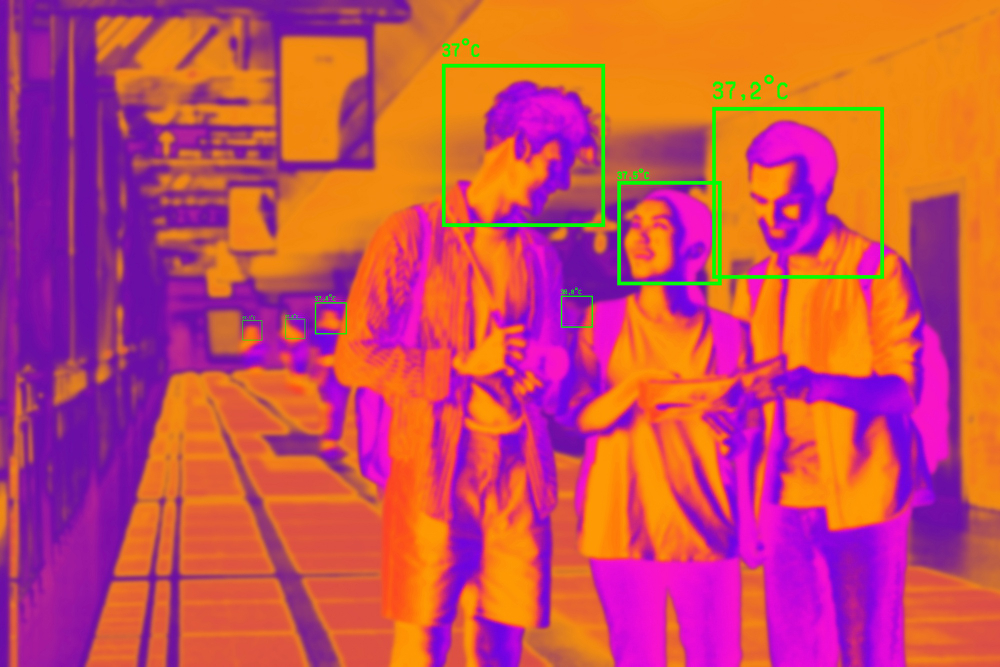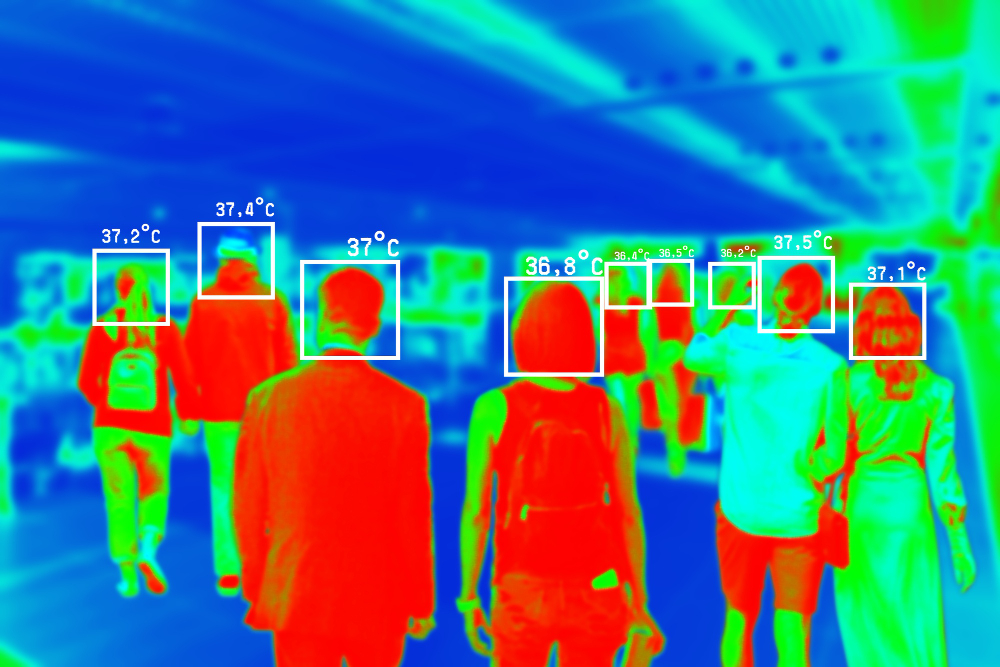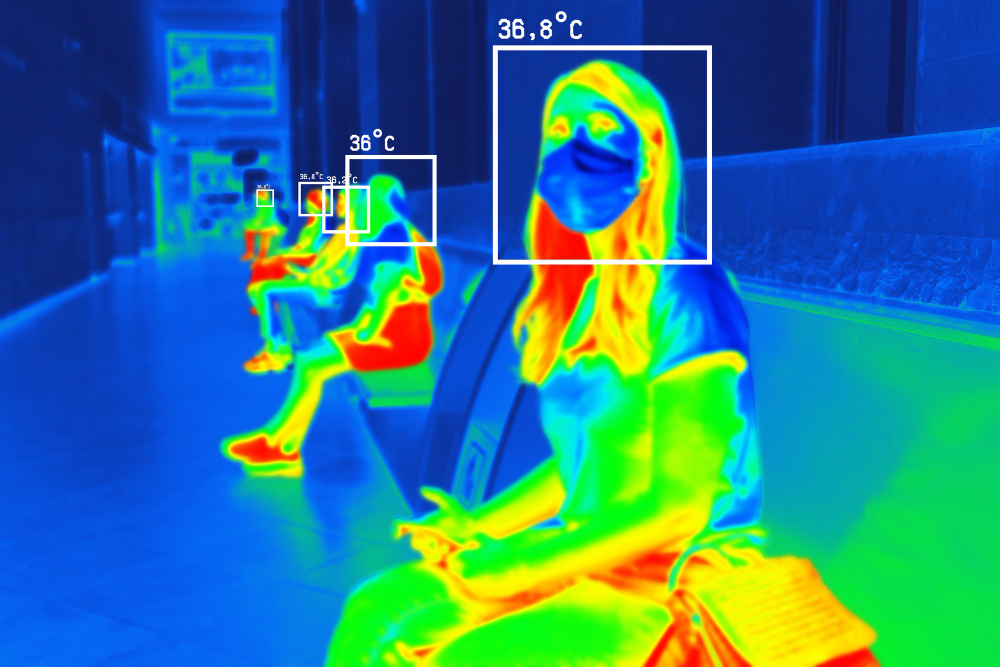Thermal imaging (TI) is considered the fastest-growing area. Devices supporting this technology are popular everywhere. Civilians use them to perform many tasks, from solving problems with utilities to diagnosing certain diseases. In addition, TI is an indispensable assistant to the military and intelligence agencies. Such popularity of this technology does not make it more understandable to the average layman. Therefore, everyone needs to briefly learn how TI works.
What Is Thermal Imaging?

TI is a technology that helps to recognize heat waves coming from heated objects. The captured radiation after multiple transformations turn into a special heat map, on which the user can distinguish all heat-emitting objects located in the TI equipment area. An important characteristic of this technology is the ability to “see” through most objects. Thanks to this, it is possible to find even people, animals, and just hot objects, accidentally or especially hidden behind some kind of obstacle. Another unique feature of TI is the ability to create an image in the complete absence of lighting. This quality helps people cope with various tasks in dark rooms, at night, as well as in heavy fog, rain, and snowfall.
TI technologies became available to people only a few decades ago. Initially, they were created only for military personnel. They helped them navigate in the dark and determine the location of even well-camouflaged enemy soldiers. Also, with the help of thermal imaging, various army units were able to conduct reconnaissance and complex operations after sunset. After some time, TI was not only made an obligatory attribute of the soldiers of many armies of the world but also began to be introduced into people’s daily lives. Now civilians use this technology to carry out a wide variety of work. With its help, they hunt, build houses, control the production process of complex equipment, look for heat leaks, monitor the temperature of heated bodies, help control various devices, and also carry out diagnostic measures in the medical field. This is not a complete list of all TI applications. However, even from it one can understand that without this technology, not a single industry works today.
On the basis of thermal imaging, a huge number of models of night optics are being created. They can be mobile devices (monoculars, mini-cameras, etc.), which are extremely compact. It is expedient to use them in those places where it is impossible to place more overall stationary equipment. The latter stands out for its wide functionality and the ability to determine the degree of heating of an object in a larger temperature range. Such devices effectively work at industrial enterprises, construction sites, and other similar places.
TI technologies are available in highly specialized devices used to perform specific tasks. So models of the observational, measuring, and pyrometric types became available to people. The first is characterized by increased sensitivity of the sensors, due to which it is possible to capture heat at a greater distance. This helps security guards, rescuers, and the military to cope with their tasks. Measuring-type models are characterized by maximum accuracy, which allows you to determine the temperature of an object with minimum error. Such optics are indispensable for industrial enterprises of various types. Pyrometric models have the unique ability to detect temperature deviations from a given reference. This feature is very useful for builders and employees of industrial enterprises.
How does thermal imaging work?

The discovery of ways to trap heat was the beginning of a new era in the production of NVDs. This technology began to be actively introduced into various types of optics, expanding the capabilities of people and allowing them to perform almost any job in the dark. All TI equipment has an identical principle of operation. It is quite complex and multi-stage, so not everyone can figure it out. To get a general idea of the process, it is necessary to dwell on several key stages.
How TI works:
- At the initial stage of the process, the lens of any device captures IR light. It is emitted by any heated body, regardless of what they are (animate or inanimate). In this case, you should know that only rays that fall within the range of the optics are captured. Depending on the purpose of the device and its cost, it can vary over a very wide range.
- “Caught” and focused beams are received by IR detectors. They are located inside the body of the device and can be set to different sensitivities (in most cases it depends on the purpose of the optics). Based on the information received, a special thermogram is created, which will be used as the basis for the formation of the final image. It displays the temperature at different points on the surface of the object under study.
- Next, the created thermogram is converted into electrical impulses. The latter are transferred to a special electronic system, where further data processing takes place.
- After complex manipulations, data is generated that will be visible to the user. This process is multi-stage, but in modern devices, it takes only a few fractions of a second to complete it. It uses the full potential of the equipment and forms the highest quality image.
- At the final stage, the information goes to the display. There it is displayed as a thermal image, in which a certain color corresponds to a certain temperature. This is what the user sees through the eyepiece, combined with the display. Also, a lot of additional information is displayed on the screen, ranging from date, time, and temperature scale and ending with data read from other sensors.
How is it different than night vision?
Thermal imaging is considered by many to be an advanced form of night vision (NV). This statement will be true only if the purpose of using the technology is to simply see in the dark. Otherwise, TI and NV have a lot of differences. They lie in the principle of action and in many other aspects.
The key distinguishing feature of the technologies under consideration is that NV makes it possible to capture only short waves of IR radiation, and TI long ones. It is this feature that helps thermal imaging devices find heat and identify any heated objects. Among other differences, the scope of both technologies should be highlighted. In most cases, TI is used for some kind of professional activity, so devices of this type are rarely found among ordinary users. At the same time, NV is equally popular with amateurs and professionals. This is due not only to lower cost but also to maximum ease of operation. Also among the distinguishing features of both technologies include the ability of TI to work effectively even in complete darkness. At the same time, NV requires at least a minimum of light (for example, from the Moon, stars, lanterns, searchlights, etc.) to form an image. This is because to create an image, NV uses “caught” rays reflected from all surrounding objects. This light is multiplied by the device used and makes the image visible to the human eye.
Recently, the pace of development of TI technologies has accelerated markedly. In this regard, it began to be actively introduced into various spheres of human activity. To get the most out of using thermal imaging, you need to know the basic principle of its operation and learn the most important features. In this case, it will be possible to get rid of various difficulties during operation and cope with most of the tasks.
































































